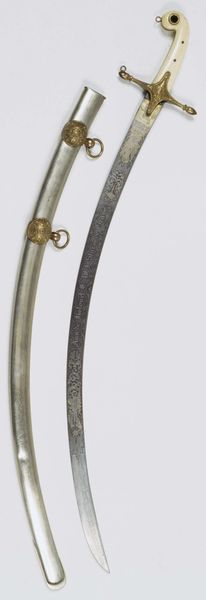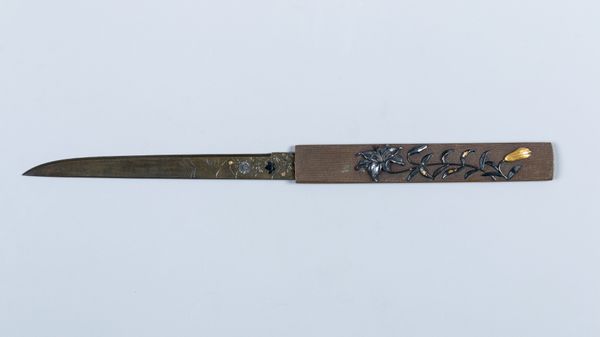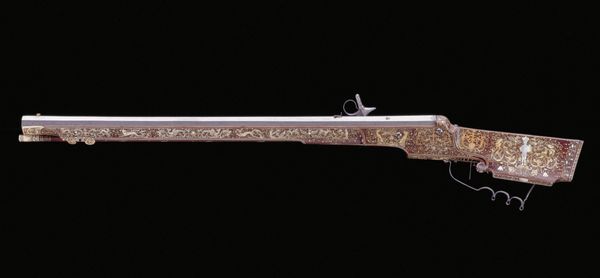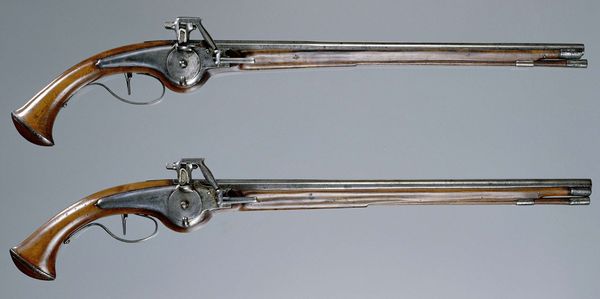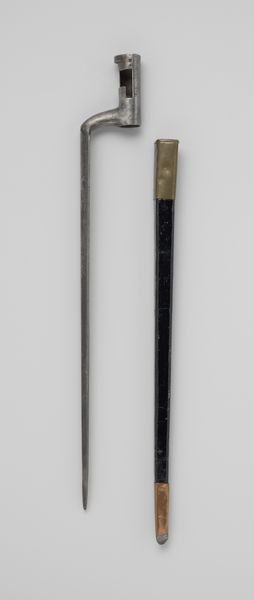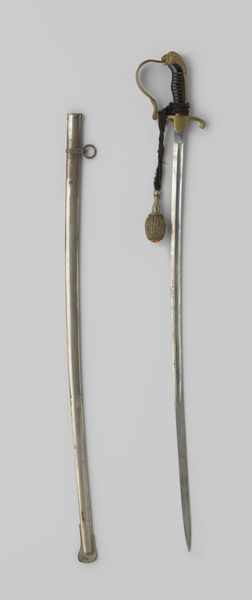
metal, bronze, sculpture
#
neoclacissism
#
metal
#
sculpture
#
bronze
#
sculpture
Dimensions: length 87 cm, length 78 cm, width 3.5 cm
Copyright: Rijks Museum: Open Domain
Curator: Editor: So, we have here an 1830s Navy Officer's sword, complete with its scabbard. It's by Julien Coulaux and is constructed of metal, bronze and...it looks intimidating! So pristine and elegant. How should we interpret something like this? Curator: It's fascinating to consider this object as more than a symbol of authority or simply a weapon. Let’s explore the cultural and social narratives interwoven into its design and purpose. Who was afforded this power, and conversely, who was subject to it? Editor: Good point. When we talk about military power at this time, we also need to discuss its relationship to colonial power. Curator: Precisely. Consider the sword’s place within a broader political landscape. This wasn't merely a decorative piece; it symbolized control, domination, and the enforcement of a certain world order. We can understand its use and value within power dynamics, especially naval power at that time. The design aesthetic—the presumed 'beauty' of it—also reflects cultural values and biases, doesn’t it? Editor: Right, the intricate detailing of the bronze contrasts so starkly with the actual violence it represents. I also noticed the era, the 1830's which suggests this sword took a part in enforcing the Opium wars against China. Does its association to Neoclassicism tell us more? Curator: Definitely. Neoclassicism often invoked ideals of heroism and order, justifying and glorifying the state's actions through aesthetic beauty. Does knowing this shift your perception of the object itself? Editor: Yes, definitely. Looking at it again, I can better understand that its visual appeal only reinforces its place within a violent hierarchy. It is pretty chilling. Thanks! Curator: It's a vital part of engaging with historical art, isn’t it? Acknowledging the layered meanings embedded in seemingly simple objects!
Comments
No comments
Be the first to comment and join the conversation on the ultimate creative platform.
